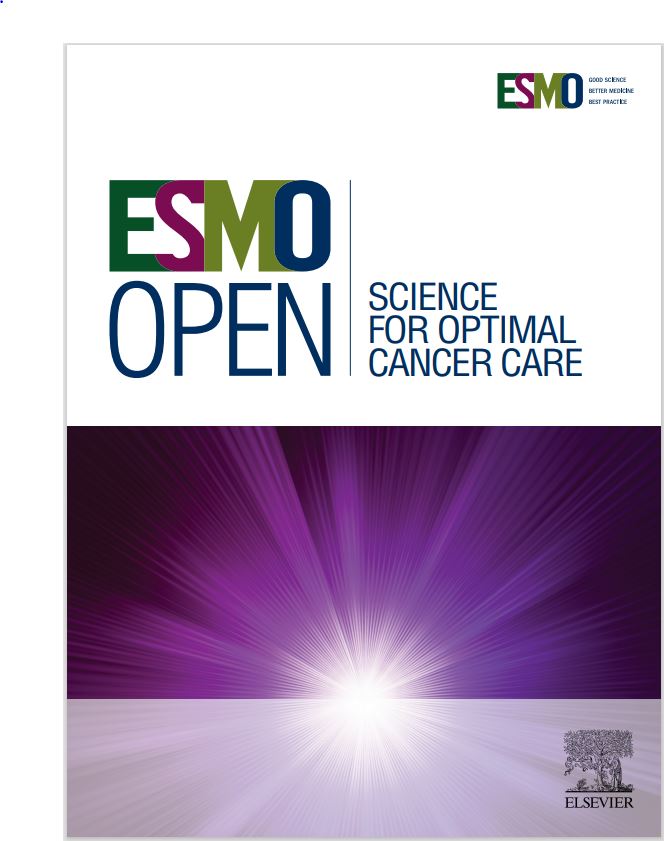胆道肿瘤的精确肿瘤学:液体活检的新作用
IF 7.1
2区 医学
Q1 ONCOLOGY
引用次数: 0
摘要
液体活检已经被证明在几种恶性肿瘤的诊断、风险分层和治疗个性化方面是有效的,尽管目前临床应用仍然有限,但它也可能成为胆道癌的一种改变实践的工具。它有望用于早期诊断,特别是在高危人群中,一些关于循环游离DNA (cfDNA)、循环肿瘤细胞和差异microRNA (miRNA)谱的研究正在进行中。循环肿瘤DNA (ctDNA)也作为一种可行的无创生物标志物出现在治疗环境中,用于检测切除后的微小残留疾病和监测疾病复发。到目前为止,它在胆道癌的基因组分析中特别有价值,与组织样本的大多数分子改变具有良好的一致性。在临床实践中,当肿瘤组织不足以进行下一代测序时,或者当需要紧急治疗决策时,CtDNA分析可能会特别被考虑。此外,它提供了提供实时图像以监测治疗反应和动态识别耐药突变的可能性,可能代表优化治疗策略的一种方法。本文章由计算机程序翻译,如有差异,请以英文原文为准。
Precision oncology in biliary tract cancer: the emerging role of liquid biopsy
Liquid biopsy has already proven effective in aiding diagnosis, risk stratification and treatment personalization in several malignancies, and it could represent a practice-changing tool also in biliary tract cancer, even though clinical applications are currently still limited. It is promising for early diagnosis, especially in high-risk populations, and several studies on circulating free DNA (cfDNA), circulating tumour cells and differential microRNA (miRNA) profiles in this setting are ongoing. Circulating tumour DNA (ctDNA) also appears as a feasible noninvasive biomarker in the curative setting, in detecting minimal residual disease after resection and in monitoring disease recurrence. As of today, it can be particularly valuable in biliary tract cancer for genomic profiling, with a good concordance with tissue samples for most molecular alterations. CtDNA analysis may especially be considered in clinical practice when the tumour tissue is not sufficient for next-generation sequencing, or when urgent therapeutic decisions are needed. Moreover, it offers the possibility of providing a real-time picture to monitor treatment response and dynamically identify resistance mutations, potentially representing a way to optimize treatment strategies.
求助全文
通过发布文献求助,成功后即可免费获取论文全文。
去求助
来源期刊

ESMO Open
Medicine-Oncology
CiteScore
11.70
自引率
2.70%
发文量
255
审稿时长
10 weeks
期刊介绍:
ESMO Open is the online-only, open access journal of the European Society for Medical Oncology (ESMO). It is a peer-reviewed publication dedicated to sharing high-quality medical research and educational materials from various fields of oncology. The journal specifically focuses on showcasing innovative clinical and translational cancer research.
ESMO Open aims to publish a wide range of research articles covering all aspects of oncology, including experimental studies, translational research, diagnostic advancements, and therapeutic approaches. The content of the journal includes original research articles, insightful reviews, thought-provoking editorials, and correspondence. Moreover, the journal warmly welcomes the submission of phase I trials and meta-analyses. It also showcases reviews from significant ESMO conferences and meetings, as well as publishes important position statements on behalf of ESMO.
Overall, ESMO Open offers a platform for scientists, clinicians, and researchers in the field of oncology to share their valuable insights and contribute to advancing the understanding and treatment of cancer. The journal serves as a source of up-to-date information and fosters collaboration within the oncology community.
 求助内容:
求助内容: 应助结果提醒方式:
应助结果提醒方式:


